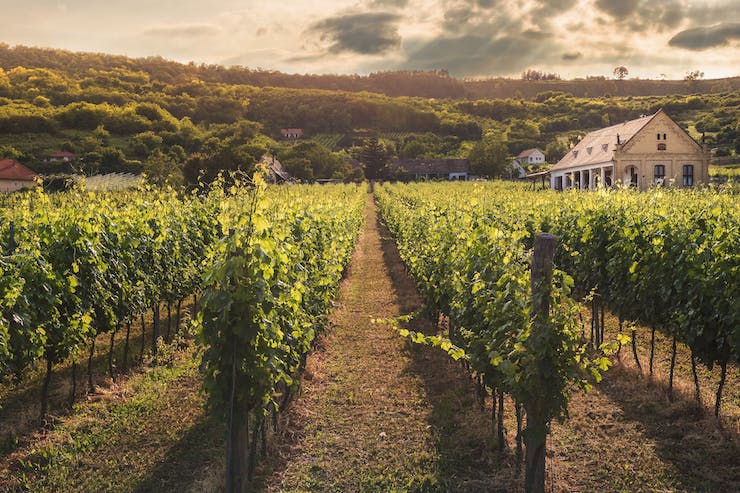
Consumers today are more involved in their purchases than ever. Gone are the days when you had one retailer to purchase your needs from. This is ever true when it comes to grocery purchases. Most people have access to more than one grocery store within their home towns. Once inside the store there can be several suppliers of similar items. When it comes time to make a purchase a customer often researches their items first, even their groceries. So many people now choose to only buy produce and fresh goods from sustainable and organic suppliers. But how can a customer, or even a buyer for a grocery store, know for certain if the goods they are receiving are from actual sustainable sources? After attending a National Wildlife conference Jim Cupples set out to address this issue.
Jim Cupples is a graduate from the University of Oregon who has always been interested in how to make agriculture a sustainable endeavor. One of the topics discussed at the Washington D.C. conference was about the importance of regenerative agriculture practices. Regenerative agriculture is a philosophy of farming that creates conservation through the use of recycling things like mulch, increasing bio diversity, topsoil regeneration, and improving the water cycle. As Jim pointed out, “There’s a lot of things you can do in regenerative agriculture, but there’s a few that are really visual. They’re really the big three in regenerative agriculture: No till or reduce till farming; the second one would be using cover crops; and then the third one would be crop rotation.” But the rules and regulations that oversee these practices are very lax. A farmer can easily say they adhere to these practices without worrying about having to prove if they are in fact doing so.
There is a gap in accountability. As David DeGennaro, a Policy Specialist for the National Wildlife Federation, said “For consumers to be confident that the products they’re purchasing have a certain sustainability footprint, there has to be some accountability there. One of the weaknesses for many of the sustainability initiatives that exist is that they’re self reported by the producers.” And that is where Jim Cupples plans to make a difference with the use of drones and blockchains.
Blockchains get a lot of coverage in financial news, but they can be very beneficial for maintaining accountability for farmers and ranchers. A blockchain is literally a chronological chain of blocks (data) that can be publicly seen. While the blocks are public they are still secure. Investopedia, a website dedicated to educating and empowering people about finances, explains it like this: “After a block has been added to the end of the blockchain, it is very difficult to go back and alter the contents of the block. That’s because each block contains its own hash, along with the hash of the block before it. Hash codes are created by a math function that turns digital information into a string of numbers and letters. If that information is edited in any way, the hash code changes as well.” So to be able to hack a block in the chain, you would first have to find a way to hack all the ones before it sequentially.
For this reason Jim created AgCheck, a company that uploads drone images to a blockchain system to create accountability in agriculture. As stated on the company’s website, “We take drone imagery and store it directly to blockchain – creating an immutable record of images that include the date, time, and location of the images taken. We help verify that the farming and ranching practices being promoted are actually occurring on the ground, and provide farms with these images so they can use them for their own businesses.” Jim contracted help from Oregon’s Lane County Community College and Oregon State University. LCC Chief Flight Instructor Sean Parish and his drone pilot class operate the drones for AgCheck while two engineering students from OSU, Aaron Galati and Josh Fisher, built the blockchain system to be used on VeChain. The first step was for the students from LCC to send their drones up over a farm to collect images.
Jim chose Moondog’s Farm, an organic farm that implements regenerative farming practices in Lane County. Some of the practices used at Moondog’s farm are solar energy and dry farming along with cover crops. Moondog’s owners Dan Schuler and Shelly Bowerman were happy to participate in this program. The data collected by the drones would not only be uploaded to the blockchain for consumer accountability, but would ultimately help them better farm their land. So far Moondog’s Farm is the only participant’s in AgCheck’s program, but Jim is confident the platform will have more customers with a wide range of uses.
He went on to say, “The knowledge that we’ve gained in understanding how to move drone images directly to blockchain is something that has wide applications. You could have drones capturing images of boats and prove they were at this time and place and that they actually did capture these fish in a sustainable way. I think there’s a ton of other ways that you can use drone-to-blockchain technology.” And as Aaron Galati pointed out, “We can verify the pictures are from where they say they were and at what time they were taken. We can take the data from the images and push that onto the blockchain system, which is a public ledger, and that data would be unchangeable. It’s 100% verifiable.” So now when a customer goes to buy fresh produce at their local market from a supplier claiming to be a sustainable source, that specific customer can access the blockchain and see drone images to verify this information.
|